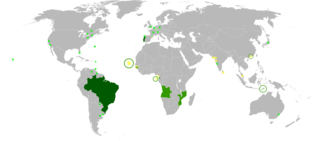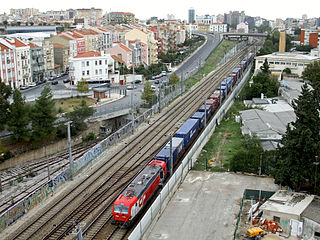| Castro of Cidadelhe(Castro de Cidadelhe) | |
| Castro | |
| Official name:Castro de Cidadelhe | |
| Country | |
|---|---|
| Region | Norte |
| Sub-region | Douro |
| District | Vila Real |
| Municipality | Mesão Frio |
| Location | Cidadelhe |
| - coordinates | 41°10′43″N7°50′40″W / 41.17861°N 7.84444°W Coordinates: 41°10′43″N7°50′40″W / 41.17861°N 7.84444°W |
| Owner | Portuguese Republic |
| For public | Public |
| Visitation | Closed (Mondays and on 1 January, Easter Sunday, 1 May and 25 December ) |
| Easiest access | Estrada Nacional EN108, at the 104 kilometre marker, from Cidadelhe, until the chapel of São Gonçalo |
| Management | Instituto Gestão do Patrimonio Arquitectónico e Arqueológico |
| Operator | DRCNorte (Portaria 829/2009; DR, Série II, 163, 24 August 2009 |
| Status | Property of Public Interest Imóvel de Interesse Público |
| Listing | Decree 26-A/92; DR, Série 1B, 126, 1 June 1992; included in the Alto Douro Vinhateiro - Região Demarcada do Douro (v. PT011701040033) |
The Castro of Cidadelhe (Portuguese : Castro de Cidadelhe) is a Portuguese castro in civil parish of Cidadelhe, in the municipality of Mesão Frio.

Portuguese is a Western Romance language originating in the Iberian Peninsula. It is the sole official language of Portugal, Brazil, Cape Verde, Guinea-Bissau, Mozambique, Angola, and São Tomé and Príncipe. It also has co-official language status in East Timor, Equatorial Guinea and Macau in China. As the result of expansion during colonial times, a cultural presence of Portuguese and Portuguese creole speakers are also found in Goa, Daman and Diu in India; in Batticaloa on the east coast of Sri Lanka; in the Indonesian island of Flores; in the Malacca state of Malaysia; and the ABC islands in the Caribbean where Papiamento is spoken, while Cape Verdean Creole is the most widely spoken Portuguese-based Creole. A Portuguese-speaking person or nation may be referred to as "Lusophone" in both English and Portuguese.

Portugal, officially the Portuguese Republic, is a country located mostly on the Iberian Peninsula in southwestern Europe. It is the westernmost sovereign state of mainland Europe. It is bordered to the west and south by the Atlantic Ocean and to the north and east by Spain. Its territory also includes the Atlantic archipelagos of the Azores and Madeira, both autonomous regions with their own regional governments.

Castro culture is the archaeological term for the material culture of the north-western regions of the Iberian Peninsula from the end of the Bronze Age until it was subsumed by Roman culture. It is the culture associated with the Celtiberians, closely associated to the western Hallstatt horizon of Central Europe.
















